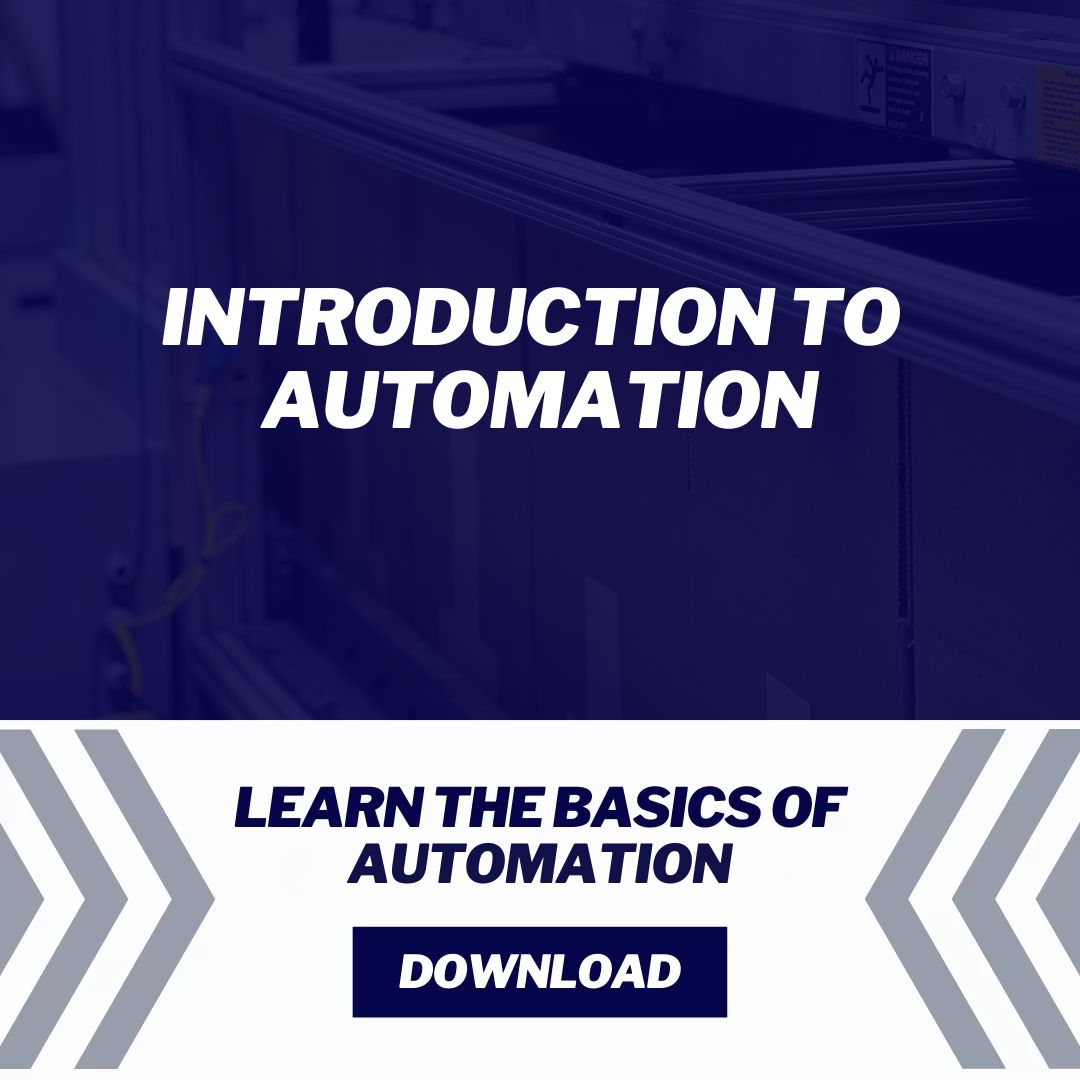Automation
quick guide
Our Introduction to Industrial Automation Systems Guide is intended to take a deep dive into industrial automation and help you determine if automation is right for you. Specifically the full guide covers, types of automation, real-world applications, benefits, custom vs. out-of-the box systems, and how to get the best price and quality. You can download the complete guide at the links below, or browse the quick guide further down the page.
Introduction to Industrial Automation Systems
Your complete guide to Automation
Overview
Industrial automation systems are at the forefront of modern manufacturing and production processes. These systems encompass a wide range of technologies and techniques designed to streamline, optimize, and control industrial processes. By automating tasks that were traditionally performed by humans, industrial automation systems significantly improve efficiency, accuracy, and productivity in various industries.
Types of Automation Systems
Fixed Automation
Flexible Automation
Programmable Automation
Integrated Automation
This involves the seamless integration of various automation components, such as robots, PLCs, and SCADA systems, to optimize the entire production processes.
Real-World Applications
These real-world examples showcase the diverse applications of industrial automation systems across various industries. Whether it’s improving production efficiency, maintaining quality standards, ensuring safety, or handling complex and repetitive tasks, industrial automation plays a pivotal role in modern manufacturing and production processes. To explore even more real-world applications download our full guide.
Robotic Assembly Lines
PLC-Based Control Systems
Programmable Logic Controllers (PLCs) are used in factories to control machinery, such as conveyor belts, packaging systems, and quality control. A PLC can easily be programed to find and remove defective parts from an assembly line. Removing the element of human error and increasing overall quality.
Automation System Benefits
When it comes to industrial automation there are a vast number of benefits. Below are 4 key benefits to implementing Industrial Automation Systems. Want to know all the benefits industrial automation systems have to offer? There are 5 more we cover in our complete Introduction to Industrial Automation guide.
01. Increased Efficiency
02. Enhanced Accuracy & cONSISTENCY
03. Improved Safety
04. Scalability
Automation systems can be scaled up or down to accommodate changes in production volume or product variations, making them adaptable to evolving business needs. Giving your workforce flexibility allowing you to grow or shrink at a moment’s notice.
Custom Vs Out-of-the-box
Determine Complexity
Budget & Timeline
Think About The Future
Ultimately, the final decision should align with your specific requirements, resources, and strategic objectives. Keep in mind your long-term goals and try to be forward thinking about your needs over the next 3-5 years. This will help you make the best decision on which path to take.
Getting the Best Price
Investing in an industrial automation system is a significant decision, and getting the best price without compromising on quality is crucial. Here are a few things you should consider to make the overall process a success.
Assess Your Needs Thoroughly
Choose the Right Automation Company
Request Multiple Quotes
Consider Total Cost of Ownership
Wait, there’s more you should consider to help you get the best price on your automation system. We have 5 more tips ready for you in our complete Introduction to Industrial Automation Systems. By following these steps and taking a thoughtful and strategic approach to your automation project, you can increase the likelihood of obtaining the best price for your industrial automation system while still achieving your desired level of performance and efficiency.


